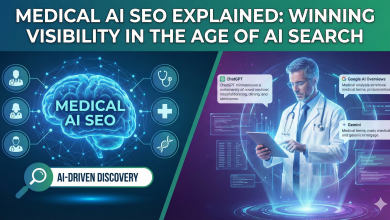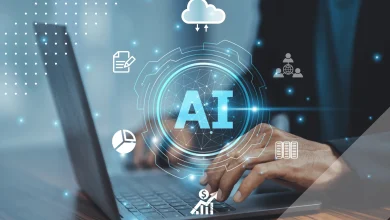
Venture capital is less a lottery than a discipline of risk management. Done right, AI could transform it; done poorly, it will repeat old mistakes at machine speed.
Most people picture venture capital as “spray-and-pray”: scatter cheques widely and hope one startup becomes a unicorn. There is a grain of truth in that image: returns are indeed dominated by a handful of outliers, yet it misses the essence of the job. Venture investors are professional risk managers. They allocate capital to fragile early-stage ventures facing thousands of unknowns and try to identify signals that tilt the odds in their favour.
The challenge is practical as much as philosophical: too many opportunities, too little time, and limited reliable data. That bottleneck explains the industry’s habits and why AI, properly deployed, could be transformative. Used carelessly, it will only make existing mistakes faster. Used wisely, it could help investors integrate what science already knows into how capital is deployed.
Beyond spray-and-pray
The “one unicorn saves the fund” arithmetic has long shaped the venture mindset. A single 100× success can offset dozens of failures, so funds tolerate extreme risk in search of rare outliers. But that view rests on blunt mathematics rather than refined judgement.
In practice, most venture decisions are not about gambling on miracles; they are about triage. Which founders deserve a closer look? Which markets are plausible? Which technologies are scientifically and commercially viable? These are questions of risk allocation, not luck.
For everyday investment discipline, the most valuable assets are speed, credible information, and the capacity to learn as evidence accumulates. AI can expand all three, if it delivers trustworthy signals rather than confident guesses.
Where human process breaks down
Venture capital faces a scale problem. Thousands of proposals arrive each year; analysts have minutes to decide whether a deck deserves a meeting. Inevitably, they rely on shortcuts: university pedigree, warm introductions, and surface indicators of traction.
These heuristics work occasionally but come at a cost. Promising but unconventional founders (often those outside elite networks) are filtered out early. Even for those who pass, diligence quality is uneven: some startups are studied exhaustively, others barely at all.
AI could rebalance this process by broadening what can be checked quickly and making assessments more consistent. It can help surface signals that humans overlook: resource constraints, scientific evidence, demographic trends; and thereby reduce the randomness that still colours early-stage investing.
From minutes to milliseconds
The advantage of AI is not creativity; it is scale and recall. Properly engineered systems can read a pitch deck, then cross-check claims against scientific papers, patents, regulations and market data. They can scan public code or datasets, identify inconsistencies in growth metrics, and gather comparative signals across industries faster than any human team.
Crucially, AI can also help investors integrate reliable long-term forecasts (energy-resource projections, climate models, demographic trends) into the decision process. These are domains where science already offers dependable guidance but where time and expertise often limit investors’ ability to use it.
Imagine diligence that automatically tests whether a company’s market thesis aligns with credible climate scenarios, or whether a resource-intensive technology fits with projected supply constraints. That is derisking in the truest sense: letting evidence about the physical world inform financial judgement.
Today, these capabilities are more blueprint than product. But they signal how AI could connect the scattered dots between scientific insight and venture finance.
Hallucinations, gaming and bad data
But there is a trap there. Generic large language models are skilled at writing fluent text, not at distinguishing truth from plausible fiction. Left unchecked, they invent facts, misread data and overstate certainty: dangerous flaws in an investment context.
The quality of data is just as important as the sophistication of the model. Online information has exploded in volume but not always in reliability: fake statistics, synthetic content and unverified claims are now widespread. AI systems trained or fed with such material risk amplifying noise rather than insight. Without strong validation layers and curated data sources, even the best algorithms can mistake volume for truth.
Ethical and legal issues multiply the risk. Poorly sourced data can reinforce bias; confidential material must remain secure; opaque models raise accountability questions for limited partners and regulators alike.
In short, prompting a chatbot for investment advice is not diligence. It is delegation without due
process… and it merely accelerates old errors.
Doing AI properly in venture capital
If AI is to move beyond hype, three principles must guide its use.
- Provenance and transparency. Every claim the AI produces should trace back to verifiable evidence. Systems must retain the source, timestamp and confidence level of each data point so that humans can audit the reasoning.
- Domain tuning and diversity. High-value tools will not rely on one generic model but combine several: one for scientific data, another for code, another for legal text or market. By comparing their outputs, investors can see where consensus or uncertainty lies.
- Human-in-the-loop governance. Machines should highlight anomalies, patterns and risk clusters; people should make the calls. Well-designed workflows include human review stages, continuous testing of the models, and external audits for fairness and reliability.
These principles support portfolio strategies that emphasise steady, evidence-based growth over blind unicorn hunting. The result could be a venture ecosystem that values consistency over spectacle, without losing ambition.
A conditional, hopeful revolution
AI will not replace human intuition. The founder’s resilience, the chemistry of a team, the instinct that a technology is ready: these remain irreducibly human judgements. What AI can change is the quality and breadth of the evidence behind those judgements.
If done well, AI can help investors embed scientific knowledge (from climate trajectories to resource models and demographic realities) directly into capital allocation. It could make funding
decisions more aligned with what the world’s data actually shows … and why not contribute to
countering the wider backlash against science by demonstrating its tangible value in business.
That is the hopeful version of this story: a venture ecosystem that learns to listen to what science is saying. Done properly, AI will make investors not only faster but wiser, turning risk management into a bridge between innovation and evidence. Done poorly, it will simply make the old mistakes at machine speed. The difference, as ever, will be engineering … and intent.



